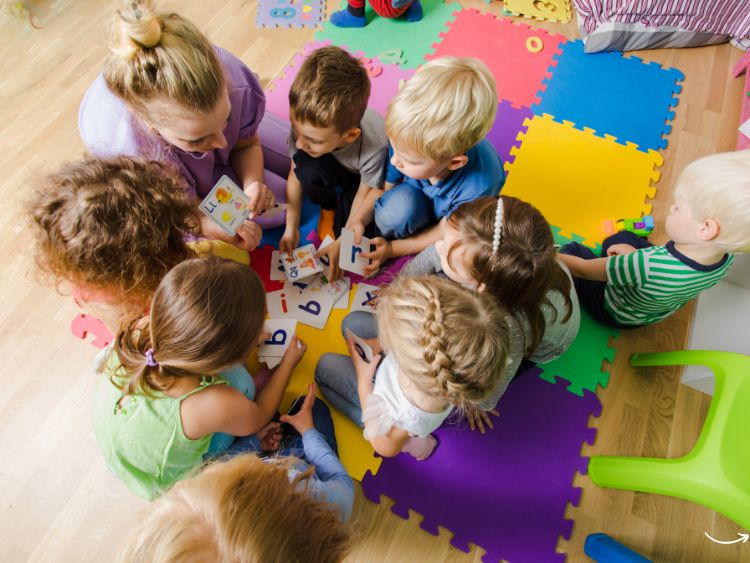Welcome to the wonderful world of infant daycare room ideas! Designing a warm, safe, and stimulating space for the tiniest tots isn’t just about aesthetics—it’s about crafting a nurturing environment where infants can learn, grow, and feel at home. Whether you’re setting up a new daycare or revamping an existing one, this guide will help you create a daycare room that meets the unique needs of infants while providing peace of mind to parents.
From cozy nooks to stimulating sensory zones, let’s dive into the best ways to transform your daycare space into a haven for both infants and caregivers.
Planning and Designing Your Infant Daycare Room
Creating an effective infant daycare room starts with solid planning. Here’s how to lay a strong foundation:
1. Understand the Regulations
Ensure you’re familiar with local daycare regulations regarding infant care, including:
- Adult-to-Infant Ratio: Typically 1:3 or 1:4.
- Crib Safety Standards: Spacing, mattress requirements, and safety rails.
- Emergency Exits and Evacuation Plans: Clear access and pathways.
2. Assess Space Requirements
A daycare room should allow infants to crawl, explore, and play safely. Plan for:
- Play Area: For crawling and play.
- Quiet Area: For feeding and naps.
- Changing Station: Hygienic, spacious, and well-stocked.
- Storage: Keep supplies organized and out of reach.
3. Incorporate Developmental Needs
The room’s design should cater to infants’ developmental milestones. Consider including:
- Visual Stimulation: High-contrast patterns and bright colors.
- Auditory Stimulation: Gentle music and soothing sounds.
- Tactile Exploration: Different textures in play mats and toys.
- Movement Development: Soft climbing structures and low furniture.
Engaging Infant Daycare Room Ideas
Now, let’s explore creative ideas for each section of the infant daycare room.
1. Cozy Crib Nook
Create a soothing area where infants can nap peacefully.
- Comfortable Cribs: Ensure each crib meets safety standards and has a firm mattress.
- Soft Lighting: Gentle nightlights or dimmable lamps.
- Sound Machines: White noise or lullabies to aid sleep.
- Personalization: Name tags on cribs, familiar blankets.
2. Nurturing Feeding Corner
A dedicated area for feeding fosters comfort and bonding.
- Rocking Chairs or Gliders: For caregivers to sit comfortably.
- Nursing Privacy: Curtains or room dividers for breastfeeding.
- Bottle Warmers: Ready-to-use warm milk.
- Sanitization Station: For washing and sterilizing bottles.
3. Stimulating Play Zone
Encourage sensory exploration and movement with a colorful, interactive play area.
- Crawling Mats: Soft mats with varied textures and patterns.
- Sensory Wall: Mirrors, crinkle toys, and busy boards.
- Baby Gym: Hanging toys to promote reaching and grasping.
- Soft Climbing Equipment: Gentle slopes and steps for crawling practice.
- Push Toys and Walkers: For older infants starting to walk.
4. Calm-Down Corner
A serene area where infants can unwind and relax.
- Soft Cushions: Pillows and bean bags.
- Stuffed Animals: Cozy companions for cuddling.
- Books: Board books with colorful images.
- Soothing Sounds and Lighting: Twinkling lights and calming music.
5. Practical Changing Station
A well-organized changing station ensures smooth diaper changes.
- Changing Table: With safety straps and raised edges.
- Diaper Storage: Easily accessible and fully stocked.
- Wipes and Sanitizers: Hygienic and within reach.
- Handwashing Station: Sink or hand sanitizer for quick clean-up.
- Disposable Liners: For a clean changing surface.
6. Engaging Decor and Layout
The right layout and decor can transform the atmosphere of the room.
- Wall Murals: Nature themes, animals, or colorful shapes.
- Hanging Mobiles: Visual stimulation with movement.
- Label Everything: Helps caregivers stay organized.
- Safety First: Child-proofed corners, power outlets, and furniture.
7. Outdoor Play Space
If possible, incorporate an outdoor play area for fresh air and sunshine.
- Soft Turf or Sand Pit: For safe crawling and play.
- Baby Swings: Gentle swinging motion.
- Water Play: Splash tables or mini-pools.
- Shade Structures: Protect from direct sunlight.
Essential Supplies for an Infant Daycare Room
Make sure your room is well-stocked with these must-have supplies:
- Cribs and Mattresses: Compliant with safety standards.
- Feeding Supplies: Bottles, warmers, bibs.
- Diapers and Wipes: Multiple sizes and hypoallergenic options.
- Toys: Developmentally appropriate and non-toxic.
- First Aid Kit: For minor emergencies.
- Safety Gear: Outlet covers, corner guards, and gates.
FAQs About Infant Daycare Room Ideas
Q1. What’s the best way to organize toys in the infant daycare room?
A1: Use clear storage bins or labeled baskets to keep toys sorted by type (e.g., soft toys, blocks). Ensure they’re placed at a low level so infants can easily access them.
Q2. How can I keep the infant daycare room clean and sanitized?
A2: Regularly wipe down surfaces with non-toxic disinfectants, wash toys daily, and sanitize changing tables after each use. Encourage handwashing among caregivers.
Q3. How can I make the room visually stimulating without overwhelming infants?
A3: Opt for soft colors with pops of bright hues. Use high-contrast patterns and gentle lighting to create visual interest without overstimulation.
Q4. How should I handle sleep schedules in an infant daycare room?
A4: Create individual schedules based on each infant’s needs. Use sleep charts to monitor naps and communicate with parents about their child’s sleep routine.
Q5. What’s a good way to involve parents in the design process?
A5: Share room design ideas with parents and gather their feedback. Consider parent surveys or suggestion boxes to encourage participation.
Conclusion
Designing an infant daycare room involves balancing safety, comfort, and stimulation to create an enriching environment for the littlest learners. By thoughtfully organizing each section and incorporating creative infant daycare room ideas, you can craft a space where infants feel secure and caregivers can thrive. Make sure your room is functional, inviting, and ready to support every precious milestone!



